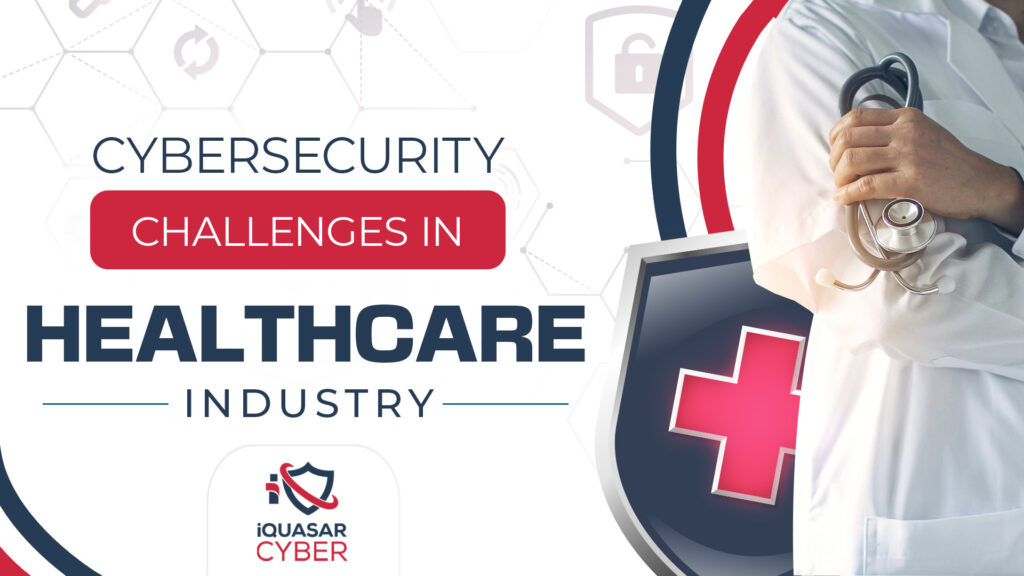
A major digital transformation has resulted in an increase in the cybersecurity challenges in healthcare industry in the last few years. Like other businesses that have embarked on this digital transformation, cybersecurity is among the most important aspects of the business transformation strategy. Cybersecurity is not merely a compliance task anymore but is a catalyst to a profitable business by securing data and other business assets. To survive today’s onslaught of attacks on the healthcare industry, transformation of business model to incorporate cybersecurity as a key strategic initiative in safeguarding data and assets is becoming even more prevalent than before. Protecting healthcare data is mandatory to survive in today’s digital world and provide access to the data without any disruption to conduct normal business functions. Increasing cybersecurity challenges in healthcare industry due to relentless attacks by malicious users with rampant ransomware attacks, and exploitation of common vulnerabilities have shaken the healthcare industry financially and impacted their brand in the past few years. Not to mention that these cyber-attacks have put patient safety at risk, as well as sensitive patient data at risk too. In some cases, these attacks have resulted in patient care being delayed or canceled. Reports of ransomware being the largest cyber threat facing healthcare facilities have emerged frequently, resulting in data theft and disruption of services.
An amalgamation of complex business processes and highly sensitive data has made the healthcare industry a target for many malicious users. Let’s not forget that legacy processes, complex business processes, boundaryless networks, and cloud environments have significantly increased the threat landscape in the past few years. Since the data is sensitive in nature, the reward for stealing is also very high. So, meeting cybersecurity challenges in today’s complex business operations is an equally uphill task. The digitization of patient data and the plan for streamlining the IT infrastructure and process are adding to the challenges of securing data in this industry. Traditionally, the industry has been marred with the manual process, high volume of paper records, and lack of information security planning and strategy has led to increased challenges for information security executives and others.
According to the Verizon 2021 Data Breach Investigations Report a substantial increase in breaches have occurred in the healthcare industry, rising from 304 incidents to 521 from the previous year. These data breaches are from confirmed sources, and almost all of the attacks were for financial gains. External threats accounted for 51 percent, while internal accounted for 48 percent. As indicated from the same report, web applications were the main target for attacks, personal and medical data was compromised in attacks.
With the advancement in technology, the healthcare industry has benefited in many areas and streamlined processes, improved inefficiencies, lowered costs, improved patient services, and enhanced user experiences for internal employees. However, as noted by the Verizon report, internal misuse is at high levels and has increased at an alarming rate leading to data breaches. The internal misuse seems to be from deliberate actions as well as human errors thus making the jobs of the security team even harder. According to a LexisNexis Risk Solutions Group white paper, improving cybersecurity is the second most crucial focus among healthcare chief information officers.
Almost all security controls start with some control framework to manage and monitor cyber risks. Irrespective of the company’s methodology or operating model, frameworks are fundamentally the essence of lowering and managing security risk. Examples of security frameworks are NIST, ISO, HIPAA, HITRUST, CIS, COBIT or custom frameworks. These frameworks have become a foundation for implementing security controls and lowering risk for almost every large organization. Companies are creating strategic and tactical risk lowering strategies based on any of the frameworks, especially NIST based standardized frameworks. NIST controls seem to be the most popular framework in the healthcare industry.
Below are some areas that healthcare industry service providers can focus on to implement better cybersecurity controls. The list is not a complete action item for security controls but a summary to incorporate into a strategy.
With cybersecurity consultants in high demand and scarce human capital available in the current market, it is even harder for companies to have full-time staff to manage cybersecurity processes and safeguard assets. iQuasar Cyber, Inc can provide you with expert guidance on cybersecurity planning, assessment, strategy, implementations and getting compliant with HIPAA, PCI-DSS, CCPA, etc. compliance, so that you can focus on serving your clients. Our consultants have vast experience providing security assessments and provide strategies to lower risks and better prepare for regulatory compliance. Our consultants have expertise in cybersecurity frameworks, including NIST, ISO, CIS, CSF, HIPAA, etc., and have served small to large customers in various industries. Check our other blog Essential Security Controls To Secure Your Assets to review what security controls you can implement to better manage your cybersecurity risk.
Setup a meeting with iQuasar Cyber, Inc. for a free consulting hour to learn more about our services and how iQuasar Cyber can help you with securing your assets. Our consultants can talk to you on the phone about your security needs and put a plan for combating breaches.